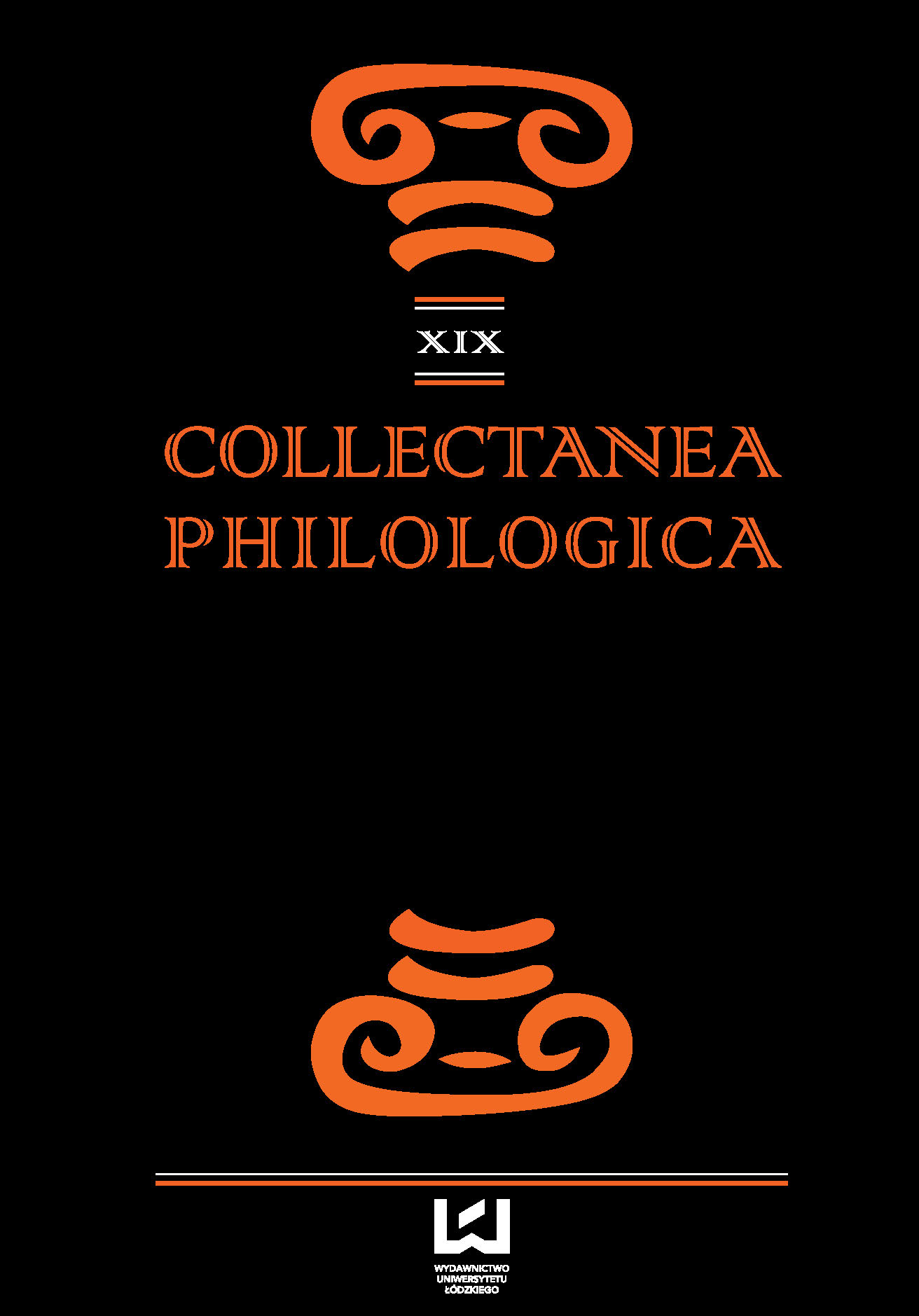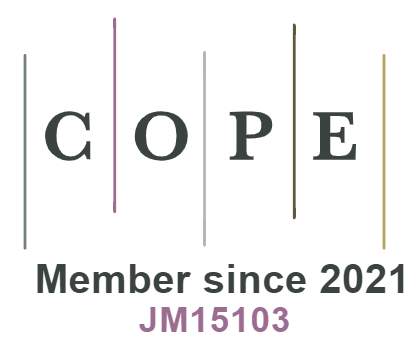Podsłuchać tajemnicę poety… Ajschylos i reminiscencje ajschylejskie w twórczości Jana Kasprowicza
DOI:
https://doi.org/10.18778/1733-0319.19.09Słowa kluczowe:
Jan Kasprowicz, Aeschylus, translationAbstrakt
Jan Kasprowicz, lived in 1860–1926, whose fame and glory is nowadays in the shadow, in his time was considered one of the greatest and most important Polish poets and authors. He was a diligent translator, who made Polish public accustomed with a great number of pieces of worldwide literature. He made about eighty translations of different works which is a huge and rare number, especially when taking into account only one person who was at the same time an author of his genuine works, an academic scholar and a journalist. He was fascinated and inspired by Aeschylus from the time he was a schoolboy. And thus we may find many reminiscences of Aeschylus’ poetry in his genuine works. His fascination which lasted many years culminated with the translation of Aeschylus’ tragedies into Polish. As for Kasprowicz Aeschylus was ‘the king of the tragic playwrights and the most powerful worldwide author of the tragedies’.
Bibliografia
Anfam, D. (1999). Abstract Expressionism. London: Thames & Hudson.
Google Scholar
Arnason, H.H. Mansfield, E.C. (2009). History of Modern Art. New York: Pearson.
Google Scholar
Baziotes, W. (1947). ‘I cannot evolve any concrete theory’. Possibilities I, 1 (winter), 2.
Google Scholar
Baziotes, W. (1949). ‘The Artist and his Mirror’. Right Angle 3 (June 1949), 3–4.
Google Scholar
Bernstock, J. E. (1993). ‘Classical Mythology in Twentieth-century Art’. Artibus et Historiae vol. 14, 153–183.
Google Scholar
Chipp, H. B. (1970). Theories of Modern Art. Berkeley: University of California Press.
Google Scholar
Crain, S.D. (2004). William Baziotes’ Duality: Escaping the ordinary and finding the extraordinary. Thesis Master of Arts, Athens, Georgia.
Google Scholar
Gibson, A. (1987). ‘The Rhetoric of Abstract Expressionism’ in M. Auping (ed.) Abstract Expressionism the Critical Developments. New York: Harry N. Abrams.
Google Scholar
Gombrich, E. (1985). ‘Image and Word in Twentieth Century Art’. Word and Image vol.1, issue 3, 213–241.
Google Scholar
Hadler, M. (1977). ‘William Baziotes: A Contemporary Poet-Painter’. Arts Magazine 51 (June), 102–110.
Google Scholar
Hauptman, J. (2005). Beyond the Visible: The Art of Odilon Redon. New York: The Museum of Modern Art.
Google Scholar
Heilbrunn Timeline of Art History [online] http://www.metmuseum.org/toah/works-of-art/1995.234/ [accessed 17/10/2016]
Google Scholar
Jachec, N. (1993). ‘Myth and the Audience: The Individual, the Collective and the Problem of Mass Comunication by the Early 1950s’. American Abstract Expressionism. Critical Forum Series, Vol. I, Liverpool: Liverpool University Press-Tate Gallery Liverpool, 129–140.
Google Scholar
Kagan, A. (1975). ‘Paul Klee’s Influence on American Painting New York School’. Arts Magazine 49 (June), 54–59.
Google Scholar
Kempner Freed, E.- Sharp, E. (1957). The Magical Worlds of Redon, Klee, Baziotes. Houston, Texas: Contemporary Arts Museums.
Google Scholar
Larson, B. (2005). The Dark Side of Nature. Science, Society and the Fantastic in the Work of Odilon Redon. Pennsylvania: Pennstate University Press.
Google Scholar
Noce, V. (2011). Odilon Redon dans l’oeil de Darwin. Paris: RMN.
Google Scholar
Polcari, S. (1991). Abstract Expressionism and the Modern Experience. Cambridge: Cambridge University Press.
Google Scholar
Preble, M. (2004). William Baziotes. Paintings and Drawings 1934–1962. Milan: Skira.
Google Scholar
Sandler, I. (1965). ‘Baziotes, Modern Mythologist’. Art News (February), 28–30, 65–66.
Google Scholar
Sandler, I. (1970). Abstract Expressionism: The triumph of American painting. London: Pall Mall Press.
Google Scholar
Sandler, I. (1978). The New York School. New York: Harper and Row.
Google Scholar
Sandstrom, S. (1955). Le monde imaginaire d’Odilon Redon: étude iconologique. New York: Witterborn.
Google Scholar
Shapiro, D.- Shapiro, C. (1990). Abstract Expressionism. A Critical Record. Cambridge: Cambridge University Press.
Google Scholar
Siegel, K. (2011). Abstract Expressionism. London: Phaidon.
Google Scholar
Spector, N. (ed.) (2014). Guggenheim Museum Collection A to Z. New York: Guggenheim Museum Publications.
Google Scholar
Still, C. (1971). William Baziotes: Late Work 1946–1962. New York: Marlborough Gallery.
Google Scholar
Tuchman, M. (1971). The New York School. London: Thames & Hudson.
Google Scholar
Pobrania
Opublikowane
Jak cytować
Numer
Dział
Licencja
Prawa autorskie (c) 2016 © Copyright by Authors, Łódź 2016; © Copyright for this edition by Uniwersytet Łódzki, Łódź 2016

Utwór dostępny jest na licencji Creative Commons Uznanie autorstwa – Użycie niekomercyjne – Bez utworów zależnych 4.0 Międzynarodowe.












